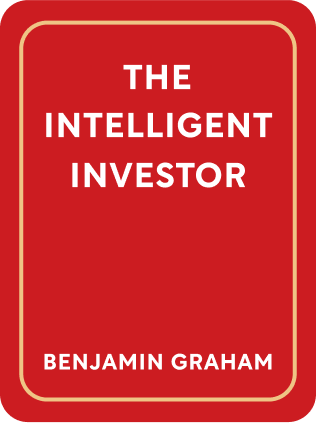

This article is an excerpt from the Shortform book guide to "The Intelligent Investor" by Benjamin Graham. Shortform has the world's best summaries and analyses of books you should be reading.
Like this article? Sign up for a free trial here .
What does an aggressive investment portfolio look like? How should aggressive investors choose stocks?
An aggressive investment portfolio follows strategies of aggressive investors, who spend a lot of time doing meticulous research on their stocks. In The Intelligent Investor, Benjamin Graham provides criteria for building an aggressive investment portfolio.
Read more about aggressive investing and building an aggressive investment portfolio?
Building an Aggressive Investment Portfolio
Unlike defensive investors, aggressive investors who want an above-average return will need to make investments out of line with the overall market. This often means choosing individual securities, using a strategy that is unpopular in the market in order to build an aggressive investment portfolio.
Graham starts with a reminder that the task is difficult—most professional money managers who are intelligent and diligent fail to beat the market. But his own investment record shows that opportunities do exist—if you adopt a rigorous method to invest in select bargain securities, and if you are in firm control of your own psychology, you can earn above-average returns. (Shortform note: Review chapter 9 in this summary if you’d like a reminder of these ideas.)
Graham cautions that new investors should practice investing first before putting their real money at stake. There are plenty of online virtual portfolios you can use to make fictional trades. This will let you exercise your judgment and make mistakes without losing real money. Then, you can measure your returns against the S&P 500 and decide whether you want to pick stocks with real money.
Graham’s Criteria
How should you choose stocks? Like the defensive investor, start with statistical criteria for filtering all the stocks available. However, you can relax the criteria to include more companies:
- Size: No requirement for size. You can limit your risk with small companies by carefully identifying good companies and diversifying.
- Financials: Assets at least 1.5 times liabilities, and debt less than 110% of net current assets
- Dividends: Some dividends paid recently
- Earnings: Last 12 months’ earnings is positive
- Earnings growth: Last 12 months earnings’ more than earnings from 4 years ago.
- Price-to-earnings ratio: No more than 9 times earnings from the last 12 months
- Price-to-book value ratio: No more than 120% of book value.
- (Shortform note: While all other criteria here are looser than their analogue for defensive investors, this ratio is more restrictive compared than the “no more than 150%” criterion above. This is not explained.)
After applying this filter, you’ll be left with companies that are more likely to be bargains and out of favor with the market, but still with a good position and with possible good long-term prospects when building an aggressive investment portfolio.
Additional Criteria
From here, how do you choose? This is where a subjective understanding of the company comes into play. There are many roads.
Graham covers one special situation: Stocks selling below working capital value (net current assets). This means the market believes the stock is worth well less than what the company would gain if liquidated today. Sometimes this means the company is actually headed for a permanent downturn (and will burn cash to get there), but often it simply means the company has fallen out of favor with the market and will recover soon. (To calculate net current assets, take current assets, deduct current liabilities, and count fixed and other assets as zero).
(Shortform note: In the Chapters 6-7 summary, we covered other opportunities for the aggressive investor, such as unpopular large companies, secondary companies, and acquisition arbitrages.)
In his commentary, Zweig offers other criteria from value investors who are adherents of Benjamin Graham:
- Warren Buffett’s criteria: Buffett likes choosing solid businesses that will continue to grow. Specifically, this often means companies with consumer brand loyalty, business models that are easy to understand, in strong financial positions, and have monopolist positions in their markets. Notably, he’s patient to wait to buy when the stock is undervalued, such as after a scandal or temporary setbacks.
- Return on invested capital (ROIC): This measures how well the company used its money to generate its returns. ROIC is calculated by taking Owner Earnings and dividing by Invested Capital.
- Owner Earnings = Operating profit, plus (depreciation and amortization of goodwill), minus (federal income tax, cost of stock options, essential capital expenditures, income generated by unsustainable returns on pension funds)
- Invested Capital = Total assets, plus (past accounting charges that reduced invested capital), minus (cash and short-term investments)
- An ROIC above 10% is noteworthy. An ROIC above 6% is acceptable if the company is well managed and has a competitive advantage.
- Study the value of subsidiaries: Dice up a company into its subsidiaries or business segments. Then compare the financials of that subsidiary with comparable companies that have been acquired recently. You can then estimate what that subsidiary might be worth to an acquirer, and invest if it’s a bargain.
- Assess management: While Graham thinks assessing management is too unscientific to be reliable, some investors look for certain signs of good management:
- Their financial statements are easy to understand and don’t obscure the truth.
- They focus more on managing the business than on messaging expectations of Wall Street.
- They have sizable investments in the company, ideally by purchasing stock with their own money rather than being awarded stock or options.
- They have a consistent message about what they will do, and they execute on it.
- They do not have high executive turnover.
Now that you know how to build an aggressive investment portfolio, you can get to work building your stock portfolio.

———End of Preview———
Like what you just read? Read the rest of the world's best book summary and analysis of Benjamin Graham's "The Intelligent Investor" at Shortform .
Here's what you'll find in our full The Intelligent Investor summary :
- Key advice from what Warren Buffett considers the "best book about investing"
- The 2 major indicators you should use for evaluating stocks
- How you can use aggressive or defensive investing strategies






